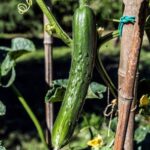Are you interested in creating your own stand alone vegetable garden but not sure where to start? In this article, we will explore stand alone vegetable gardening ideas and provide tips on how to get started. Whether you have a small patio or a spacious backyard, there are endless possibilities for growing your own fresh produce in a stand alone garden. From choosing the perfect location to maintenance tips and design inspiration, we’ve got you covered.
Stand alone vegetable gardening offers the convenience of having your own supply of fresh vegetables right at your fingertips. By understanding the concept and benefits of stand alone vegetable gardening, you can create a bountiful garden no matter the space you have available. Whether you live in an urban apartment or a rural farmhouse, standalone gardening is accessible to anyone with some creativity and determination.
In this article, we will discuss different methods for creating a stand alone vegetable garden, including container gardening, raised bed gardening, and vertical gardening. We will also offer design ideas to help inspire and guide you in creating a beautiful and functional standalone vegetable garden.
Additionally, we will provide essential maintenance tips to ensure that your garden thrives and offer guidance on harvesting and enjoying the fruits of your labor. Let’s get started on your journey to creating a thriving stand alone vegetable garden.
Choosing the Perfect Location
When it comes to stand alone vegetable gardening, one of the most crucial decisions is choosing the perfect location for your garden. The right spot can make all the difference in the success of your vegetable plants.
One important consideration when selecting a location for your stand alone vegetable garden is sunlight. Most vegetable plants require at least 6-8 hours of direct sunlight per day, so it’s essential to choose a spot that receives adequate sunlight. Take note of any trees or buildings that may cast shade on the area and consider how this will affect your plants.
Another factor to consider is water access. Your stand alone vegetable garden will need regular watering, so it’s important to choose a location that is easily accessible to a water source. If you’ll be relying on a hose, make sure it can reach your chosen spot or consider installing a drip irrigation system.
Lastly, consider factors such as soil quality and drainage. Avoid areas with compacted soil or poor drainage, as these can lead to issues such as waterlogging or root rot. Testing the soil pH and nutrient levels can also help you determine if the location is suitable for growing vegetables.
In summary, when choosing the perfect location for your stand alone vegetable garden, prioritize factors such as sunlight, water access, and soil quality. Taking the time to select the right spot will set your garden up for success and ensure healthy, thriving vegetables.
| Location Consideration | Importance |
|---|---|
| Sunlight | At least 6-8 hours of direct sunlight per day is crucial for most vegetable plants |
| Water Access | Choose a spot with easy access to a water source for regular watering |
| Soil Quality and Drainage | Avoid compacted soil and poor drainage areas by testing soil pH and nutrient levels |
Container Gardening
Choosing the Right Containers
When creating a stand alone vegetable garden using containers, it’s important to choose the right containers for your plants. Look for containers that are large enough to accommodate the root systems of your vegetables and have proper drainage. Consider using pots, barrels, or even repurposed items like buckets or crates.
Selecting the Right Vegetables
Not all vegetables thrive in container gardens, so it’s important to select the right plants for your stand alone garden. Some great options for container gardening include tomatoes, peppers, lettuce, herbs, and even smaller varieties of squash or cucumbers. Be sure to research the specific needs of each vegetable before planting.
Caring for Container Vegetables
Container gardening requires some extra care and attention compared to traditional ground gardening. Regular watering is key, as containers can dry out quickly. Additionally, be sure to feed your container veggies with a high-quality fertilizer throughout the growing season. Keep an eye out for pests and diseases, as these can spread quickly in a contained environment.
By utilizing these container gardening tips, you can create a bountiful and beautiful stand alone vegetable garden on your patio, balcony, or any small space you have available. With careful planning and maintenance, you’ll be able to enjoy fresh produce right at your fingertips.
Raised Bed Gardening
One of the popular options for stand alone vegetable gardening is using raised beds. This method involves growing plants in beds that are elevated above the ground level, typically surrounded by some kind of frame to keep the soil in place. There are several pros and cons to consider when it comes to using raised beds for stand alone vegetable gardening.
One of the major advantages of raised bed gardening is better control over the soil quality. You can fill your raised beds with high-quality soil that is perfectly suited for growing vegetables, which can result in healthier and more productive plants. Additionally, raised beds tend to drain more efficiently than traditional ground-level gardens, reducing the risk of waterlogging and providing better aeration for plant roots.
On the other hand, one potential downside of raised bed gardening is the initial cost and effort involved in constructing the beds. Building or purchasing materials for raised bed frames can be more expensive than simply planting directly into the ground.
Additionally, because raised beds have defined edges and limited space, it’s important to carefully plan out what you want to grow in each bed to maximize your garden’s productivity. Despite these considerations, many gardeners find that the benefits of using raised beds outweigh any drawbacks when it comes to stand alone vegetable gardening.
Vertical Gardening
One of the most innovative and space-saving ways to grow vegetables in a stand alone garden is through vertical gardening. This method involves growing plants upwards, using structures like trellises, fences, or specially designed vertical planters. Vertical gardening not only maximizes space in small gardens but also allows for better air circulation and sunlight exposure for the plants.
There are several creative ideas for implementing vertical gardening in a stand alone vegetable garden. One popular method is to use a trellis or pergola to support climbing vegetables like peas, cucumbers, and tomatoes. These vining plants naturally grow upwards and can be trained to climb the structure, saving valuable ground space for other crops. Another technique is to utilize wall-mounted planters or hanging baskets to grow herbs, lettuces, or strawberries vertically.
When designing a vertical vegetable garden, it’s important to consider the weight that plants will put on the structure. Ensure that any trellises or supports are securely anchored and able to bear the weight of mature plants laden with fruits. Additionally, regular maintenance such as pruning and tying up vines may be necessary to keep the vertical garden organized and aesthetically pleasing.
Incorporating vertical gardening into a stand alone vegetable garden opens up a world of possibilities for growing an abundance of fresh produce no matter how limited your outdoor space may be. From lush greenery covering trellises to colorful hanging baskets overflowing with ripe veggies, this approach adds both practicality and charm to any home garden.
| Vertical Gardening Ideas | Description |
|---|---|
| Trellis Gardening | Using trellises or pergolas for climbing vegetables |
| Wall-mounted Planters | Growing herbs and lettuces vertically on walls |
| Hanging Baskets | Growing strawberries or cherry tomatoes in hanging baskets |
Stand Alone Vegetable Garden Design Ideas
When it comes to stand alone vegetable gardening, the design of your garden is crucial in creating a beautiful and functional space. Here are some ideas and inspiration for designing a stand alone vegetable garden that will not only provide you with fresh produce but also enhance the aesthetic appeal of your outdoor space.
Some design ideas to consider:
- Pathways: Create well-defined pathways within your vegetable garden to allow for easy access and maintenance. This can be done using materials such as gravel, stepping stones, or even wood chips.
- Companion planting: Implement companion planting techniques to not only maximize space but also promote healthy growth and deter pests. Consider planting complementary vegetables together, such as tomatoes with basil or carrots with onions.
- Vertical structures: Incorporate trellises, arched entryways, or even hanging baskets to add vertical interest to your stand alone vegetable garden. This not only saves space but also adds dimension and visual appeal.
- Color schemes: Use color strategically in your vegetable garden design by incorporating colorful planters, flowers, or even painted structures. This can add vibrancy and charm to the overall look of the garden.
Creating a stand alone vegetable garden that is both visually appealing and productive requires careful planning and consideration of various design elements. By implementing these design ideas, you can ensure that your vegetable garden not only yields a bountiful harvest but also becomes a stunning feature in your outdoor space.
Maintenance Tips
Maintaining a stand alone vegetable garden is essential to keep it thriving and producing an abundant harvest. Proper care and maintenance will ensure that your vegetables are healthy and strong, and that pests and diseases are kept at bay. Here are some essential maintenance tasks to consider for your stand alone vegetable garden:
Watering
One of the most critical maintenance tasks for a stand alone vegetable garden is watering. Vegetables need consistent moisture to thrive, so it’s important to water them regularly, especially during hot and dry periods. Consider installing a drip irrigation system or soaker hoses to ensure even watering. Be mindful of overwatering as well, as this can lead to root rot and other issues.
Weeding
Weeds can quickly take over a stand alone vegetable garden, competing with your vegetables for nutrients and water. Regular weeding is necessary to keep the garden beds clear of these invasive plants. Consider using mulch to help suppress weeds and reduce the need for constant weeding.
Fertilizing
To keep your vegetables growing strong, it’s important to provide them with the necessary nutrients. Consider using organic fertilizers or compost to feed your plants throughout the growing season. Conduct a soil test periodically to determine if any specific nutrients are lacking in your soil, and adjust your fertilization routine accordingly.
By staying on top of these essential maintenance tasks, you can ensure that your stand alone vegetable garden remains healthy and productive throughout the growing season. With proper care and attention, you’ll be able to enjoy a bountiful harvest of fresh, homegrown vegetables for months to come.
Harvest and Enjoy
In conclusion, stand alone vegetable gardening offers a flexible and convenient way to grow your own produce in a variety of spaces. Whether you have a small balcony or a spacious backyard, there are options for everyone to create their own stand alone vegetable garden. From container gardening to raised beds and vertical gardening, the possibilities are endless for bringing fresh vegetables to your table.
Once you have successfully created and maintained your stand alone vegetable garden, it’s time to reap the rewards by harvesting and enjoying the fruits of your labor. There is nothing quite like the satisfaction of picking ripe tomatoes, crisp lettuce, or colorful peppers from your own garden. Not only does it provide delicious and nutritious produce for you and your family, but it also promotes a sense of accomplishment and self-sufficiency.
As you harvest from your stand alone vegetable garden, take the opportunity to savor the flavors of your homegrown vegetables in various recipes. Whether it’s a simple salad with freshly picked greens or a hearty stir-fry with an assortment of vegetables, there are countless ways to enjoy the bounties of your garden.
Embracing this farm-to-table experience can also inspire a greater appreciation for fresh, locally grown produce and encourage sustainable living practices. Overall
Frequently Asked Questions
What Is the Most Efficient Vegetable Garden Layout?
The most efficient vegetable garden layout is the raised bed method. This involves creating raised garden beds, which allow for better soil drainage, fewer weeds, and easier access for planting, weeding, and harvesting.
What Vegetables Should Be Planted Separately?
There are several vegetables that should be planted separately due to their different growth habits or nutrient needs. For example, root vegetables like carrots and potatoes should be kept separate from leafy greens like lettuce and spinach to prevent competition for nutrients and space.
What Vegetables Can a Beginner Gardener Grow?
Beginner gardeners can start with easy-to-grow vegetables such as tomatoes, zucchini, radishes, and herbs like basil and parsley. These plants tend to be low-maintenance and are forgiving of common gardening mistakes, making them ideal for those new to gardening.

If you’re looking to get into vegetable gardening, or are just looking for some tips on how to make your current garden better, then you’ve come to the right place! My name is Ethel and I have been gardening for years. In this blog, I’m going to share with you some of my best tips on how to create a successful vegetable garden.





